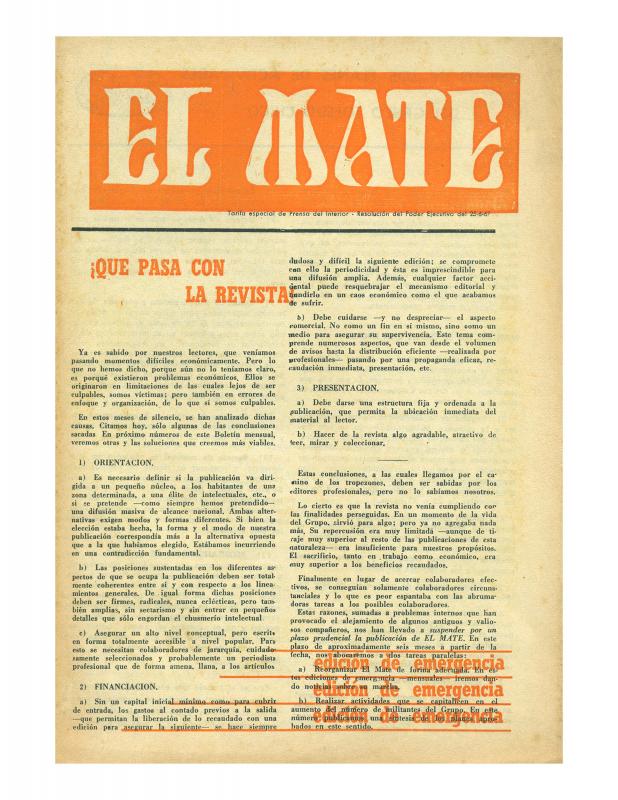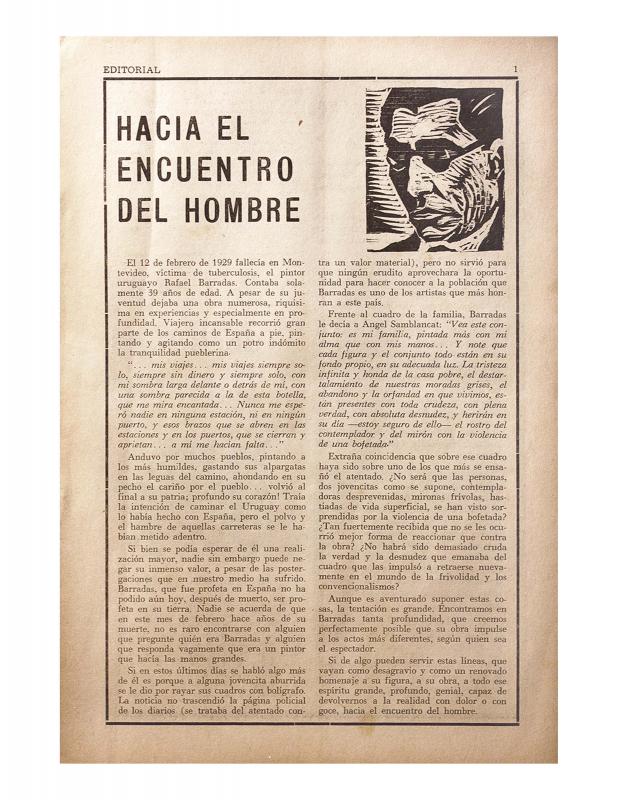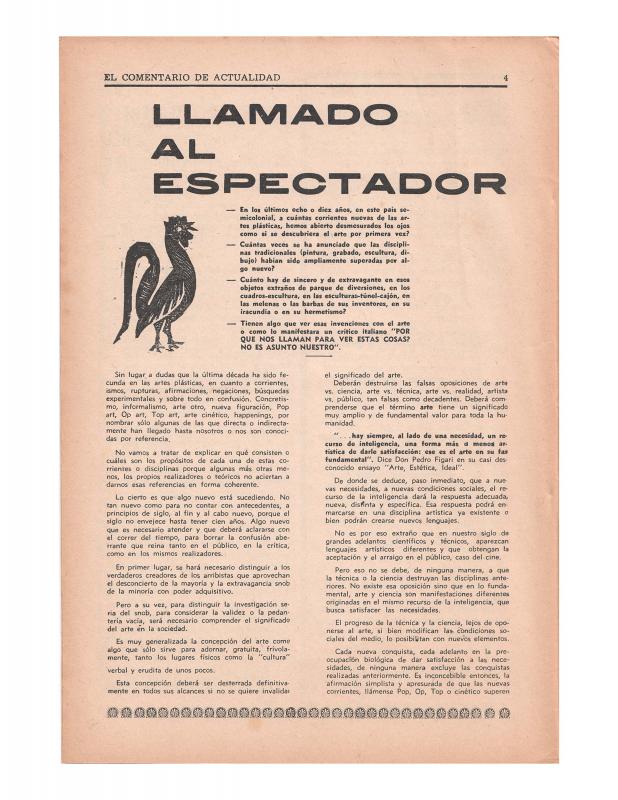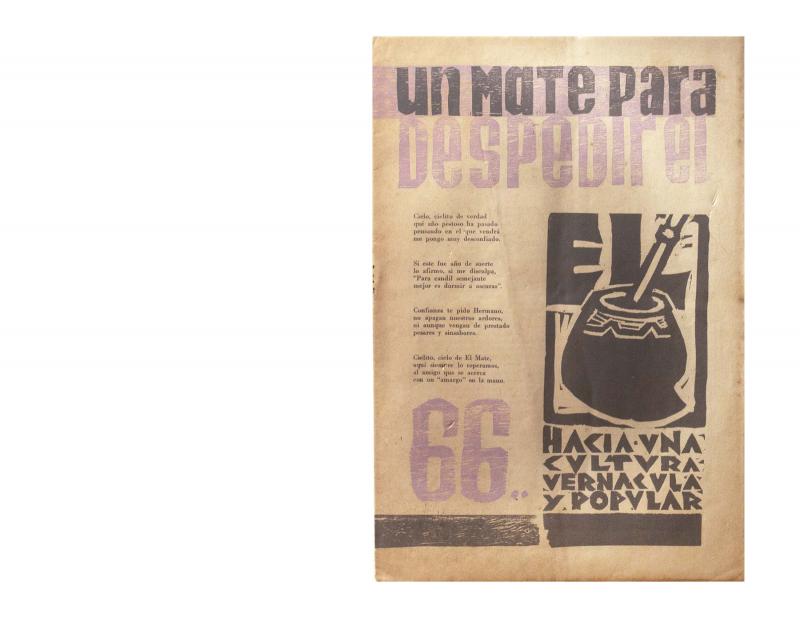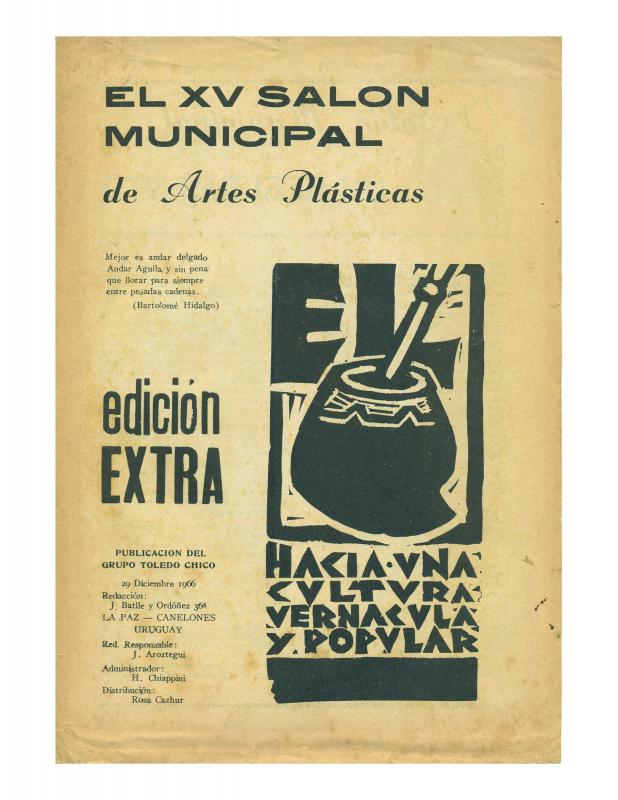In mid-1967, at the height of the Partido Colorado administration under President Jorge Pacheco Areco (1920–98), the Comisión Nacional de Bellas Artes (CNBA, founded in 1936) was reconstructed after several years of stagnation and inactivity. The engine behind the initiative was Congressman Julio María Sanguinetti (b. 1936)—an art lover who, after the end of the military dictatorship in 1985, would be elected president of Uruguay twice—and the Ministro de Educación y Cultura at the time, Luis Hierro Gambardella (1915–91). The main aim of the restructuring was to centralize decision making on art contests and other art-related activities throughout the country, and on Uruguayan participation in foreign art events. While that had been the focus of the CNBA’s work since the beginning, exactly who made decisions was now more explicit with the inclusion of “innate members” and recognized artists, as well as members of Sanguinetti’s inner circle.
The criticism voiced in this article in El Mate seems mostly aimed at the commission’s spirit, which is clearly political, rather than at its agenda. The remarks seem supportive of the commission’s intentions, though somewhat skeptical of its ability to see them through. The article opposes creating a “museum of contemporary art”—though what exactly that term means appears to be a topic of debate. The editor of El Mate states that contemporary art means “current art,” and is, in his view, an extension of earlier art; the commission, on the other hand, sees a “rupture” with modernism in the sixties, which it views as the basis for a national museum policy that would reflect the contemporary aesthetic order.
[For further reading see, in the ICAA digital archive, the following texts published by the Grupo Toledo Chico: released by the Federación de Estudiantes Plásticos del Uruguay (FEPU) “2ª exposición al aire libre en homenaje a Stalingrado” (doc. no. 1210566); “Ha muerto Felipe Seade lloran las paredes blancas” (doc. no. 1193080); by J. Aroztegui (editor-in-chief) “Hacia el encuentro del hombre” (doc. no. 1194504) and “Llamado al espectador” (doc. no. 1195546); “Un mate para despedir el 66 y recibir el 67” (doc. no. 1194176); and “El XV Salón Municipal de Artes Plásticas” (doc. no. 1193049)].


